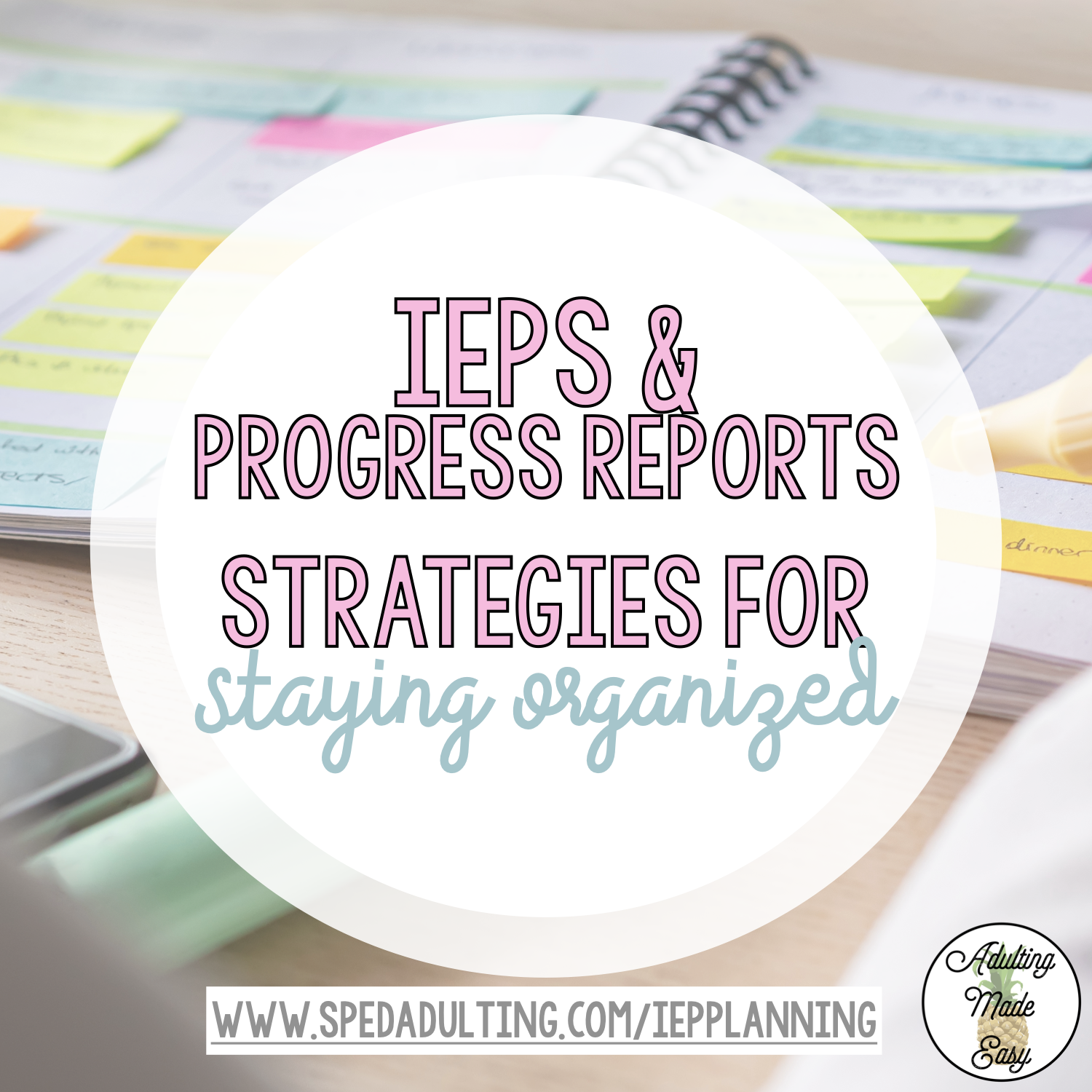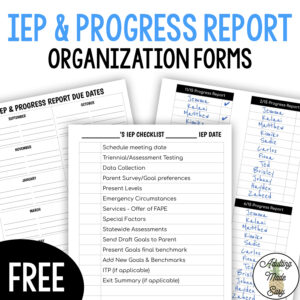It’s summer break, and you might already be thinking ahead to how you can get a jumpstart on the new school year. If you have access to your caseload, one great area to begin organizing is your IEP and progress report schedule. Below are some helpful tips to get you started as well as a FREEBIE!
1. Build a Master Calendar
-
Input all IEP due dates right away (from last year’s IEPs or student records).
-
Include progress report dates that align with report card periods or district expectations.
-
Use Google Calendar, Outlook, or a paper planner—whichever you’ll check regularly.
-
Set reminders 30, 14, and 7 days in advance for IEP meetings.
2. Group IEPs Strategically
-
Space out annual IEPs to avoid burnout (aim for no more than 1–2 per week if possible).
-
Cluster by service provider or team (e.g., do all speech-heavy IEPs in a certain week if the SLP is available).
-
Avoid peak weeks like testing windows, conferences, or field trips.
3. Create a Case Management Spreadsheet
Include:
-
Student name
-
IEP due date
-
Evaluation due date (if applicable)
-
Progress report due dates
-
Meeting scheduled date
-
Parent/guardian contact info
-
Notes/follow-ups
Use conditional formatting (like red = urgent) to visually track what’s due soon.
4. Schedule IEP Meetings Early
-
Send “save the date” notices to families and staff 4–6 weeks ahead.
-
Reserve meeting rooms in advance.
-
If you’re coordinating with outside agencies (transition services, interpreters, etc.), book them early.
5. Use a Progress Report System
-
Set calendar reminders for when data needs to be collected.
-
Create a template for collecting teacher/provider input.
-
Block time on your calendar 1–2 weeks before each due date to complete and review them.
6. Use Digital Tools
-
SpedTrack, Frontline, SEIS, or other IEP platforms often have built-in tracking tools—explore them!
-
For personal tracking, Airtable, Trello, or Google Sheets work great with color-coded labels.
7. Collaborate with Your Team
-
Meet with related service providers at the start of the year to align your timelines.
-
Share the calendar with them so everyone’s on the same page.
-
Review student caseloads together if roles or assignments changed.
Download this FREEBIE to help you get started!





